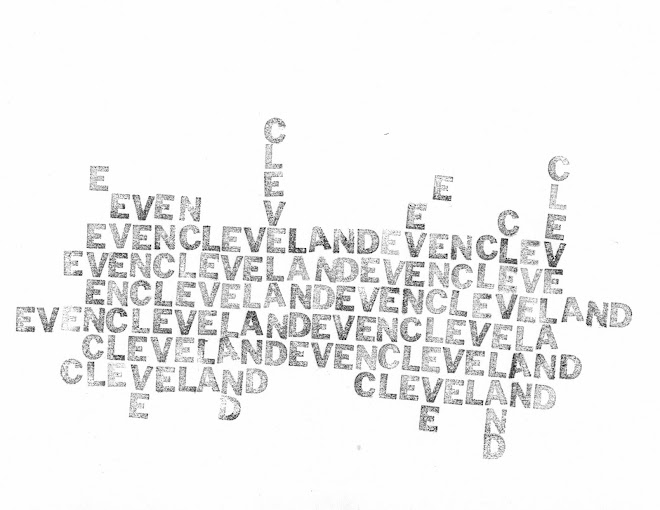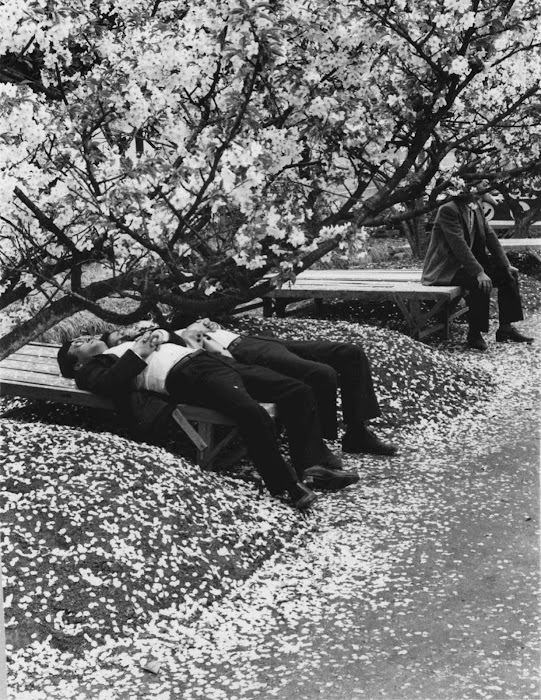*
G.W. O'Grady, "Pink roses in vase," ca. 1915. George Eastman House Collection.
*
*
A Japanese mother of pearl-inlaid lacquer box and cover. Meiji period, late 19th century, via Freeman's.
*
Seiryu Inoue, "Men lying under cherry blossoms." From Kyo no miyako, 1960/1970, via la jardin robo.
*
We live in undeniably ugly times. Architecture, industrial design, cinematography, probiotic soda branding—many of the defining features of the visual field aren’t sending their best. Despite more advanced manufacturing and design technologies than have existed in human history, our built environment tends overwhelmingly toward the insubstantial, the flat, and the gray, punctuated here and there by the occasional childish squiggle. This drab sublime unites flat-pack furniture and home electronics, municipal infrastructure and commercial graphic design: an ocean of stuff so homogenous and underthought that the world it has inundated can feel like a digital rendering—of a slightly duller, worse world.
"Why is Everything So Ugly?" n+1, Issue 44 "Middlemen," Winter 2023.
*
When [Brendon] Babenzien’s first J. Crew collection débuted to great acclaim, last July, [Derek[ Guy noted that the designs were virtually indistinguishable from more expensive, fetishized brands, such as Margaret Howell, Drake’s, Aimé Leon Dore, or Beams Plus. "If your purchases at ‘edgy’ brands like our legacy and visvim are limited to boxy tees and ever-so-slightly different jeans . . . you also look like you’re wearing j crew,” he wrote in a Twitter post. “Everyone is in jcrew. this is the reality.”
Hua Hsu, "J. Crew and the Paradoxes of Prep." The New Yorker, 3/27/2023.
*
All the sailors get depressed when they’re becalmed. The mood of Kirsten’s calls into headquarters has varied wildly, depending on whether she has wind. No stranger to adventure—she cycled alone from Europe to South Africa when she was twenty-two—she is the kind of person who, when not racing, likes to swim away from the boat “just to get that feeling of vastness, that sense of eternity, that if the boat did sail away, it would be, basically, eternity. And it is a scary thought…but it’s also kind of intriguing…to get that little bit of distance from yourself and the boat in the middle of the ocean.” ... In the last few days she seemed to think she was heading for certain defeat, having been stuck in the Atlantic doldrums for almost a month: “I don’t know how I’m supposed to feel…. I guess I’d be more excited if I knew I had a chance of getting there first.” Assured that fans will be waiting to welcome her, she starts to sound a bit like Moitessier, the French sailor who declined to return to normal life back in 1969: “It would almost be better to disappear onto some mysterious piece of land and vanish, and, you know, not have to go through the whole…”—she trails off.
Jé Wilson, "Swimming Away from the Boat." NYR, 4/27/2023.
*
Fuzzy interfaces present users with complex, artful scenarios that must be learned and mastered—a novel departure from the unconsciously simple, spoon-fed manner in which interface design has become accustomed, toward a craft-like engagement in which the skill and mastery of an object must be acquired slowly, over time. Another advantage of fuzzy interactions is that they slow us down, creating what Ezio Manzini refers to as ‘islands of slowness’ that allow us to think, experience, and re-evaluate. The relationship between subject and object becomes evolutionary, as the subtle exchange of feed-forward and inherent feedback creates the illusion of mutual growth. Of course, fuzzy interaction is not for everyone, nor is it universally applicable. […] Nevertheless, alternative modes of interaction serve to remind us that perhaps the streaming of endeavors of modern times has inadvertently stripped the world of all its charm.
John Chapman, quoted by Derek Guy in "On Emotional Durability" at Die, Workwear, found via Lin.
*
The academic and psychotherapist Lisa Baraitser has argued for a definition of “maternal time” as a temporality specifically related to the repetition of maintenance labour and the “tenuous processes of maintaining familial relations across and between generations”: to do so, she draws on Denise Riley’s work on maternal grief. In Riley’s account of the way loss can create a kind of “suspended time” in her book Time Lived, Without Its Flow, a gestational temporality is identified in which the future literally unfolds within the present over the nine months of pregnancy, and then unspools in both parties forever, reaching backwards and forwards simultaneously. “My time is your time,” the mother says to the child, and vice versa.
Helen Charman, "The Eternal Daughter." Another Gaze, 2/26/2023.
*
The photographs may have a disembodied hand reaching out to steady an infant propped up in a chair, or the edge of a mother’s body may be visible as she crouches (mostly out of sight). In other less subtle photos, a child will be seated on her mother’s lap while the mother is entirely covered with a large cloth draped over her head and body. Perhaps the most unnerving of the Hidden Mother photographs are the ones in which the mother’s face was visible in the final photograph– and was then scratched out and obliterated.
*
I was a girl then, in Morris County, New Jersey. My favorite day of the week was Thursday, when I had piano lessons in Florham Park, not because I loved the piano especially, but because we always had time to kill between school and my lesson, time my mother used instead to take me to the Frelinghuysen Arboretum, where we’d walk through the woodlands and meadows. What I liked about those afternoons was that it was just us and the flowers. After my lesson, we’d circle back to the library across the street from the arboretum, and I would check out as many books as I could carry. Flowers, music, books, all within the same circumference, which I now recognize as a gift my mother gave me. She took me by the hand and introduced me to beauty, and while I put it off later in search of knowledge, I’ve come around to seeing that the two are related, that beauty is indispensable, and that books are the reproductive proof of it.
*
*





